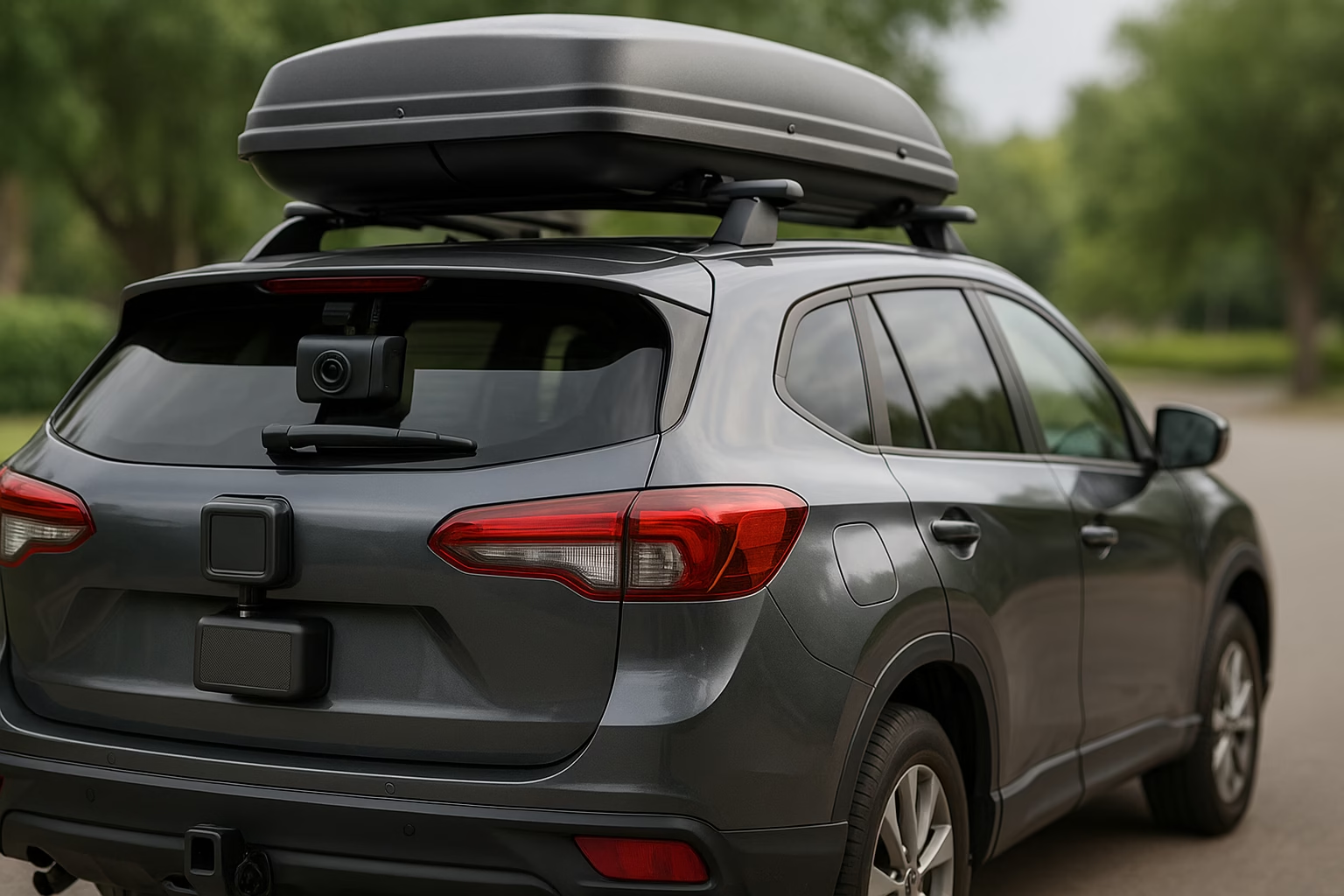Personalising a vehicle with accessories is a big part of car ownership. Roof racks carry kayaks and camping gear; bull bars provide protection from wildlife; tinted glass keeps the cabin cool; and aftermarket wheels, light bars and tow hitches improve capability or appearance. But as cars become more reliant on advanced driver‑assistance systems (ADAS), it’s important to understand how these add‑ons can interfere with the cameras, radar modules and other sensors that help keep you safe.
How accessories interact with ADAS sensors
ADAS equipment is positioned deliberately. Forward‑facing radar units often sit behind the front bumper emblem or grille, while ultrasonic sensors dot the bumpers to aid parking and cross‑traffic alerts. Cameras may be mounted behind the windscreen, in the front badge, on the wing mirrors or even in the roof. Engineers choose these locations because they provide a clear field of view and are protected from debris. When you mount something in front of them, change the bodywork or alter the vehicle’s height, you risk blocking the sensor or changing its alignment.
Roof racks and roof boxes
Many modern cars use camera pods near the top of the windscreen or in the roof spoiler to enable functions such as traffic sign recognition and driver‑monitoring. A large roof box or bulky cross‑bars could intrude into the camera’s field of view. Roof racks can also alter the car’s aerodynamic profile and change how rain or snow flows over the sensor area. If you need to fit a rack, look for low‑profile systems designed to minimise obstruction. After installation, check that lane keeping assist, road sign recognition and driver‑monitoring alerts still work normally. Removing the rack when it’s not needed keeps sensors clear and reduces wind noise.
Bull bars, nudge bars and bumper guards
Bull bars and nudge bars are popular in Australia for outback driving, but they are one of the most common causes of radar interference. The forward collision warning and adaptive cruise control radar sits behind plastic bodywork because metal would block the radio waves. Attaching a solid steel bar or aftermarket bumper directly in front of the radar can prevent the system from detecting vehicles ahead. Even smaller nudge bars can alter the radar beam and create blind spots. Some manufacturers offer ADAS‑compatible bull bars with cut‑outs or brackets to relocate the radar module. Always choose products designed for your specific vehicle and have the radar re‑calibrated after installation. If you notice more false alarms or the cruise control won’t engage, the bar might be the culprit.
Window tint and windscreens
The camera for lane keeping and traffic sign recognition sits behind the windscreen and relies on clear, undistorted glass. Dark tint films or reflective coatings on the windscreen can reduce the amount of light reaching the camera. Metallic or ceramic tints may also interfere with sensors for automatic headlights and rain detection embedded in the glass. Always follow local regulations for windscreen tinting and use films approved by the vehicle manufacturer. Avoid placing stickers or dash‑mounted devices in front of the camera. If you replace or repair the glass, calibration is normally required to ensure the camera’s field of view is accurate .
Bike racks and tow bars
Rear‑mounted bike carriers and tow hitches can obstruct reversing cameras and rear radar sensors. When a bike rack is attached, the car may think there is a constant obstacle behind and disable rear cross‑traffic alerts or automatic reversing brakes. Some vehicles have a setting to tell the system a carrier is installed; check your owner’s manual. Detachable tow bars should be removed when not in use to keep the sensors clear. If you frequently carry bikes or trailers, consider installing accessory wiring harnesses that integrate with the car’s electronics so ADAS features know when to switch modes.
Light bars and aftermarket lighting
Aftermarket LED light bars are common on off‑road vehicles, but they can create unwanted reflections in camera lenses if mounted too high or too close. Avoid placing lights directly in front of a forward‑facing camera or radar unit. Use manufacturer‑approved mounting points and ensure wiring modifications don’t interfere with the vehicle’s electrical system, which can affect sensors and control modules.
Best practices for accessory fitment
- Choose ADAS‑compatible products. Many suppliers now design bull bars, roof racks and bumper guards with cut‑outs or brackets to accommodate sensors. Look for equipment certified for your model.
- Follow professional installation. Incorrect fitment can damage wiring or change the alignment of sensors. Work with installers familiar with ADAS.
- Re‑calibrate after major changes. Any time you alter the bumper, grille, windscreen or roof line, have a technician check the radar and camera calibration. This includes suspension lifts or larger tyres, which change the height and angle of sensors.
- Keep sensors clean. Mud, bugs and road grime can block sensors just as much as a poorly placed accessory. Regularly clean radar covers and camera lenses.
Conclusion
Customising your vehicle doesn’t mean giving up on advanced safety features, but it does require a little extra planning. ADAS systems are designed to assist the driver—they can warn of an impending crash or take action to avoid it, but they are not a substitute for an attentive human at the wheel . To function correctly, sensors need a clear field of view and must be calibrated whenever their environment changes. When choosing accessories such as roof racks, bull bars, tint films or bike carriers, check that they are compatible with your vehicle’s safety technology. Install them carefully, monitor how your driver‑assistance features behave afterwards and book a professional calibration if necessary. With the right approach you can enjoy both the convenience of accessories and the protection of modern driver aids. For more on this topic, see our guide on what to do when an ADAS warning light comes on.

Hiran Alwis is an automotive lecturer and ADAS specialist with over 15 years of experience in diagnostics, advanced safety systems, and technical training. He founded ADAS Project to help everyday drivers and workshop technicians understand and safely use advanced driver assistance systems.
